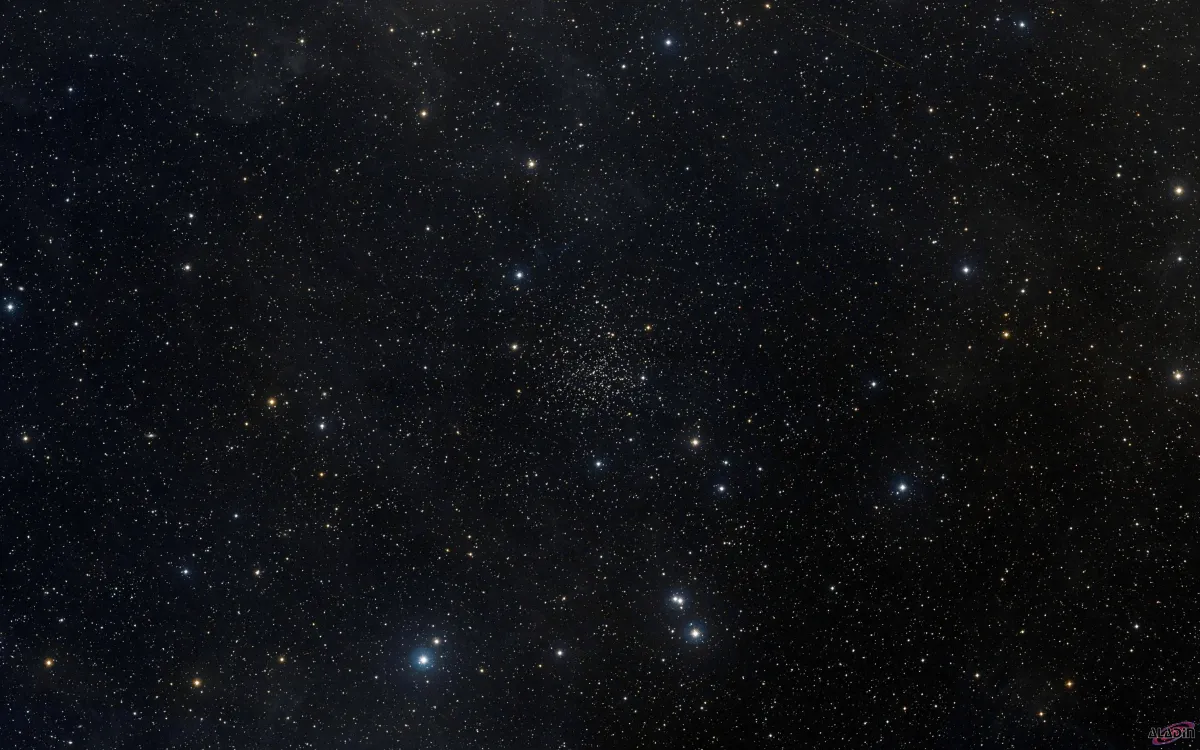Open Cluster NGC 188

History
This open cluster was discovered on 3 November 1831 by John Herschel using his 18.3 inch reflecting telescope. He cataloged it with the number h 34 in his «Slough Catalogue» and noted: «Cluster, very large, pretty rich 150...200 stars 10...8m; more than fills the field» [466] Dreyer added it 1888 as NGC 188 to his «New General Catalogue». [313]
In 1995 this cluster was added by the British astronomer Sir Patrick Moore as first and northernmost object C 1 in his Caldwell Catalogue. [299]
Physical Properties
| Designation | NGC 188 |
| Type | OCL (II2r) |
| Right Ascension (J2000.0) | 00h 47m 30.0s |
| Declination (J2000.0) | +85° 15' 30" |
| Diameter | 15 arcmin |
| Visual magnitude | 8.1 mag |
| Metric Distance | 2.000 kpc |
| Dreyer Description | Cl, vL, R, 150-200 st 10…18 |
| Identification, Remarks | h 34; GC 92; OCL 309 |
Finder Chart
The open cluster NGC 1888 can be found in the constellation Cepheus, circa 4° away from the pole star and hence visible all year long in Europe.
